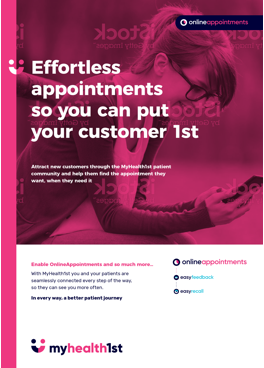
As part of the government’s comprehensive Medicare Benefits reform to combat the COVID-19 crisis, tele-psychology has been made available to all Australians.
What Are the Current MBS Benefits and How do I Stay up to Date?
As it stands, the bulk-billing of telehealth appointments is a temporary measure, but as the situation and scope of the outbreak changes by the day this can change. In essence, bulk-billing of telehealth services is available to all Australians during the pandemic and the government is doubling the usual bulk-billing incentive for telehealth to ensure that healthcare providers remain supported during the crisis and can offer concessions and vulnerable people free service. The doubled bulk-billing incentive also applies to face-to-face appointments.
The current MBS benefit codes are accurate as of March 31st, 2020 but as the coronavirus telehealth program is rapidly evolving, frequent visits to MBS Online may be warranted. Telehealth consults that are bulk-billed cannot have a gap payment. You can still charge your patients the full fee for an appointment, but they will not be able to claim it on Medicare. Some private health insurers may offer a rebate for telehealth consults.
What Is Telehealth?
Telehealth is the practise of remotely connecting with a patient for consultation, diagnosis and treatment. In a broad sense, any appointment that doesn’t require direct physical intervention or specialist equipment can be carried out via telehealth. Mental health services are perfectly suited for telehealth, with practitioners able to speak to and interact with patients remotely in much the same manner as they can in face-to-face appointments.
Until recently, telehealth services in Australia have been limited to remote communities and those with mobility or accessibility issues preventing them from easily attending face-to-face appointments, but with the advent of COVID-19, strict social distancing and lockdown, telehealth services have been made available for all. In addition to offering accessibility to patients, telehealth services have a number of benefits for both practices and patients:
- Increase in practice revenue due to expanded reach and accessibility
Telehealth consults don’t require proximity, allowing practices to engage with patients from around the country, greatly expanding the reach of the practise. The added accessibility offered to patients through telehealth services also makes it easier for new patients to engage with the practice.
- Reduced patient no-shows
Patients who book online are far less likely to miss an appointment, as are patients who book telehealth consults.
- Reduces or negated threat of COVID-19 infection or violence
Offering telehealth consults reduces exposure to potential threats of infection, whether it be COVID-19, a seasonal flu, a measles outbreak or other virulent virus. Even if you mix face-to-face consults with telepsychology appointments, the reduced number of in-person practice visits also limits possible vectors of infection. The MyHealth1st booking platform features optional COVID-19 pre-screening, allowing customers to further increase the safety of their practice. Telepsychology can also allow you to interact with violent or potentially violent patients safely.
- Offers convenience and comfort to patients
Studies have shown that telepsychology can be just as effective as face-to-face appointments when it comes to helping patients but has the added benefit of convenience and comfort for the patient, giving them control of where and how they see a psychologist.
Technological Requirements
Setting up your practice for telehealth consults may seem like a large technological hurdle, the technology required is readily available and you will already have most of it on hand. While it is possible to do some telehealth consults via Skype, Zoom, Whatsapp or other video conferencing platform, these aren’t necessarily secure, with people potentially being able to listen in to or interrupt other patient’s appointments.
No matter the platform, for video conferencing you will need a camera and either a microphone or a headset with a built in mic.
There are no specific technologies required to be eligible for MBS incentives other than the necessity that the technology or service used adheres to Australian Privacy Principles .
Depending on the platform you choose there may be privacy or security concerns that need to be tackled. Ideally a practice should use a secure end to end telehealth service, such as the MyHealth1st browser-based, encrypted and fully secured solution. Our telehealth service works with most browsers and is fully encrypted so you can conduct a consult without fear of a patient’s privileged information being released.
If you choose to use our telehealth service, there’s no need to fill in Skype information or Zoom addresses for an appointment, or to contact patients beforehand to give them the details of how the appointment will be conducted. When a patient books an appointment, both the patient and the doctor are sent an email with a unique link to the telehealth session. The link only goes active 10 minutes before the appointment is due to start and requires no third party programs or apps to run.
Tools, such as screen sharing, an interactive whiteboard and file sharing allow you to interact with patients in a similar way you might face-to-face.
To register for MyHealth1st's integrated, clinically validated telehealth solution - click here
Telehealth Standards
Telehealth standards and guidelines for mental health practitioners don’t differ greatly from those for normal consults, but do have stricter guidelines for patient consent and adequate technology. When performing a telehealth consultation, a psychologist must:
- Obtain the patient’s informed consent to participate in a telehealth consult and ensure patient confidentiality and privacy.
- Decide on the appropriateness of a telehealth consult or whether proper care requires a face-to-face consult.
- Make their identity known to the patient.
- Confirm the identity of the patient to the best of their ability.
- Explain to the patient the processes in the telehealth consult.
- Keep an adequate record of the consultation.
For more detailed information on telepsychology guidelines, please check the Australian Psychological Society or MBS Online .
In essence, any consultation that doesn’t require physical proximity or intervention is possible to offer through telehealth. Determinations of appropriateness must naturally be made on a case by case basis depending on urgency and the type of treatment needed. Medicare has announced it will cover up to 10 telehealth appointments as part of a Mental Health Care Plan.
How to Promote that your Practice Offers Telehealth
Implementing telehealth services is a great first step, but it's vital you let your patients know that you now offer this service. Letting them know how to book a telehealth appointment is equally important.
We suggest adding information to your website which links into your MyHealth1st bookings to streamline user flow and drive patient bookings. Updating your practice "on hold" recordings to inform patients they can now book a telehealth consultation with your practice online can also help patients discover the service.
Sending out a mass communication to your patients via email and/or sms informing them of this new service can help drive rapid adoption.
Don’t hesitate to reach out to the MyHealth1st team if you'd like any help with this.
If you have any questions about implementing a telehealth service for your practice, or are interested in leveraging our extensive experience to help your practice grow and thrive, the team at MyHealth1st is ready to help.
